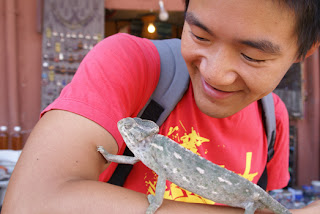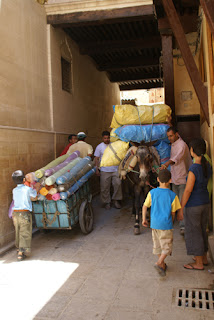
We met up with Vicky’s friend Fiona and headed to the Cinque Terre with great excitement. Not only were we heading to one of
“Cinque Terre” (meaning “five lands”) is a chain of five little villages on a 10 km stretch of very steep coastline on the Ligurian sea. The area is renowned for its quaint charm (ie. cobblestone paths, great local produce and wines) as well as the fact that they can only be easily accessed by foot or rail, due to the hilly-ness. We stayed at town #2, Vernazza, which was the one with the good beach. Strictly speaking, the beach was a pile of grey sand/dust next to the place where the boats moored. But still, very popular.

Vernazza.
Never has grey dust been more highly appreciated.
Nothing says style like matching beach towels.
The three of us stayed in a camere (a room-to-let) run by an Italian mamma of predictably large girth. She was delightfully maternal but also rather shrewd. On our arrival she proudly displayed her front-loading washing machine to me and declared: “Your laundry – it’s for free! But – you must write a review.” I was confused. A review of the laundry? “You know Trip Advisor?” I nodded. “You write to Trip Advisor, I do the washing!” Sharp.
The following day we decided to walk the famous trail that links the five villages. However, given the undulating paths and steepness of ascents and descents between each village, there was a question as to the appropriateness of our choice of footwear (ie. thongs). While still in town, Fiona addressed this by asking a robust-looking American fellow wearing hiking shoes.
“Do you think it would be OK in thongs?”
“Um … do you have proper shoes?”
“Yes.”
“Well … I think you’d be crazy to do it in thongs.”
“Yes, but we’re hardcore.”
The American seemed to take Fiona’s sarcasm as an affront.
Later, upon reaching the trail office at the commencement of the path, Vicky asked the
“Have you ever seen people walk the path in thongs?”
“There have been…some, but … (classic Italian shrug)”
“Did they look injured?”
“No … but you can try …”
As we commenced the walk, we were stopped by a Dutch woman: “I really think it would be dangerous to walk in those … but (classic Italian shrug) … it’s just my opinion …” Admittedly, she had just witnessed us struggling to cross a section of gravel path as wide as a foot, from which one could quite easily tumble to one’s death. However, we carried on.
The treacherous path.
Glittering!
After about twenty minutes of trouble-free walking, a young man in a Quiksilver T-shirt and thongs approached from the opposite direction. I took the opportunity.
“Have you had any trouble doing the path in thongs?”
“Nuh!” (classic Aussie accent) “These people here, they just don’t understand. We do everything in thongs downunder!”
We ignored the fact that he was bleeding from some sort of wound from his leg.
In the end, the path was almost completely free of slippage or thong-related incidents, proving conclusively that Australians are indeed “hardcore”. I cannot deny feeling a swell of nationalistic pride every time we passed anyone in hiking boots, especially if they were also carrying trekking poles (ie most people). Incidentally, the path was very beautiful. We swam in the glittering blue water below the path, on a rocky shore (Fiona exclaimed, “It’s just like the movies!”). We had gelati in Corniglia, anchovy bruschetta and coffee in Manarola (“Cappuccino? But it’s 4.30 in the afternoon!” exclaimed the waiter, “It’s very strange …”) and bought some of Riomaggiore’s world-famous pesto.

Corniglia: Hitler beer, Stalin beer, Bob Marley beer.
That's not us.
Also not us.
Riomaggiore.
Upon our return to the room, we discovered our neatly folded pile of clean laundry next to a handwritten note which requested that we leave our payment. A brief addendum stated: “Here is the laundry. And don’t forget … clean the slip.” This last phrase prompted much debate among the three of us. What could this mean? A misinterpretation? A comment on our hygiene? Some sort of threat? No answer could be found, even after emailing our hostess weeks later (she denied writing any such thing). If anyone with a knowledge of Italian idioms can help, we would be appreciative.
Despite the atmosphere of danger and fear, the Cinque Terre was a wonderful place: beautiful, great water for swimming, amazingly good pizza, coffee, gelati, olives and wine, and we left feeling the time had passed too quickly.

Happy customers.















































